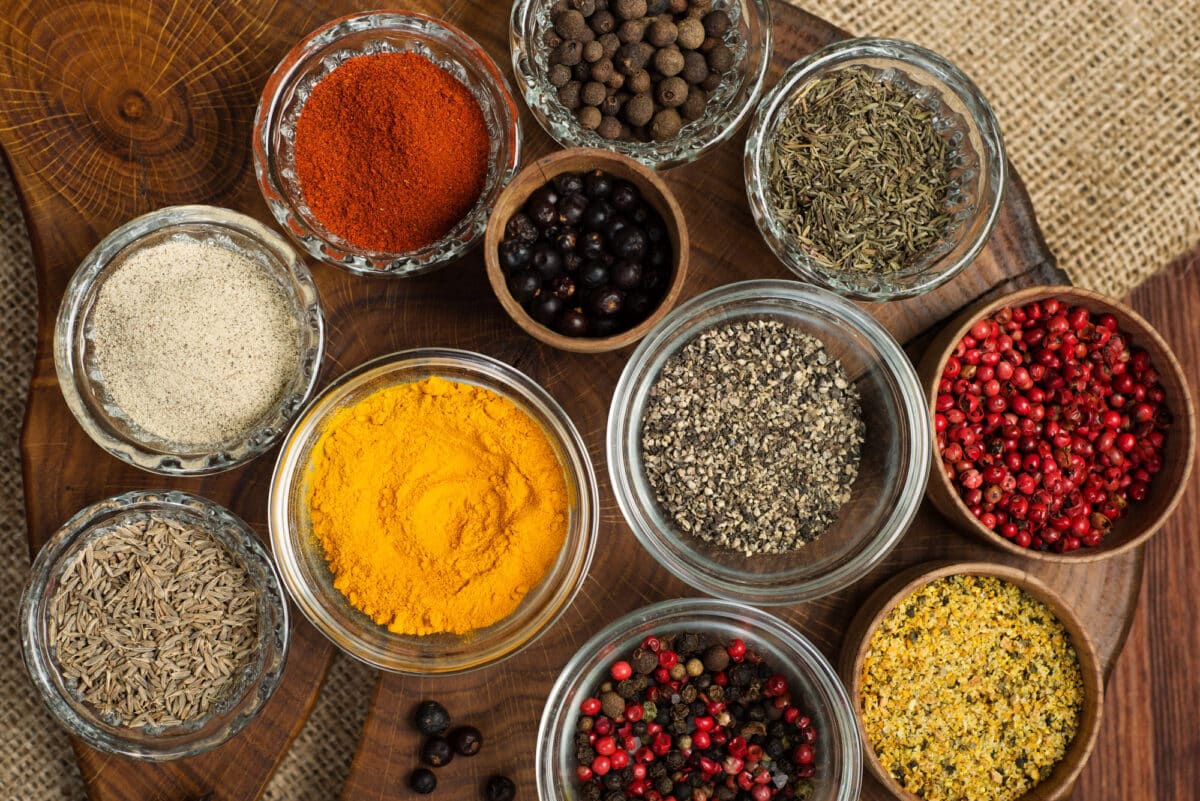These spice blends represent the flavors of their regions and show how food can evolve across borders.
Spices are essential to many cuisines, defining dishes and keeping traditions alive. From hot sauces to pastes, these blends reflect local climates, ingredients, and cooking methods. As they travel, they often adapt to new kitchens while keeping their original character.
North Africa and the Middle East
offer some well-known spice mixes. Harissa from Tunisia is a chili paste with garlic, cumin, and caraway, traditionally stirred into couscous, stews, and meat dishes. It’s become a go-to for adding heat to sauces and marinades worldwide. Chermoula, a Moroccan marinade made with cilantro, garlic, and preserved lemon, pairs especially well with fish. Another staple, Tabil from Tunisia, blends coriander, garlic, and caraway, used mainly in slow-cooked meats and stews. These blends reflect the mix of local herbs and spices that have shaped the region’s food for centuries.
In the Caucasus and the Levant
spice spreads play a big role. Muhammara, from Syria, mixes red peppers, walnuts, and pomegranate molasses, often served as a dip or sandwich spread. Zhug, a Yemeni green hot sauce with cilantro, parsley, and chili, has become popular in Israeli kitchens and beyond, adding kick to grilled foods and eggs. In Georgia, Ajika offers a blend of hot peppers and spices, perfect for soups, stews, and breads. These condiments bring together bold flavors that suit the region’s hearty cooking.
Pepper pastes are also important in Turkey and the Balkans.
Biber salçası, a Turkish red pepper paste, adds depth to stews and mezes, while Erős Pista, a Hungarian chili paste, brings heat to soups, sausages, and stews. Both are made using local peppers, and their influence has spread as people substitute them for other chili pastes in modern kitchens.
In East Asia
fermented spice pastes add a unique punch. Gochujang, a Korean favorite, blends red chili powder, glutinous rice, and fermented soybeans. It’s a key ingredient in stews, barbecue marinades, and bibimbap. It’s also made its way into fusion cooking, where it’s used in everything from burgers to salad dressings.
Whether it’s fermented chili paste from Korea or hot sauces from the Middle East, these mixes continue to find new uses while staying true to their roots.

